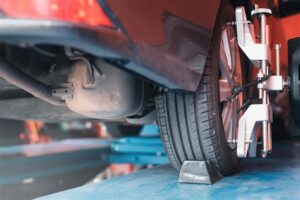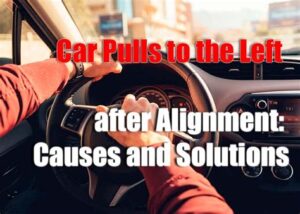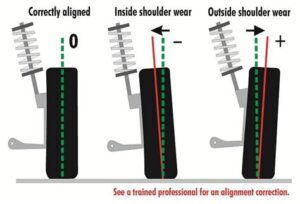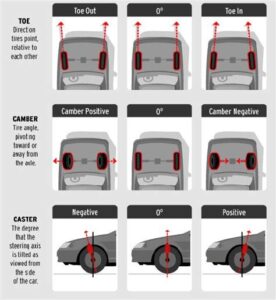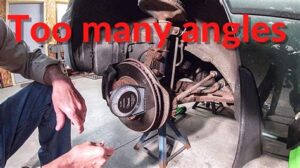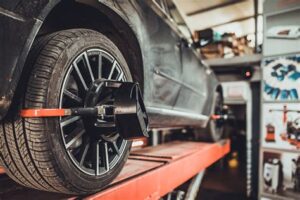Alignment for Lowered Cars: Unlocking the Full Potential of Your Ride
When it comes to customizing your vehicle, lowering your car is a popular choice for enhancing aesthetics and handling. However, many enthusiasts overlook a crucial aspect of their modifications: alignment. Proper alignment not only maximizes performance but also prolongs the life of your tires and suspension components. In this article, we’ll delve into the significance of alignment for lowered cars, exploring the key factors that affect it, necessary adjustments for optimal performance, and dispelling common misconceptions along the way. Whether you’re a seasoned gearhead or a new enthusiast, understanding the nuances of alignment can help you achieve the ultimate driving experience while ensuring your vehicle remains safe and reliable. Join us as we uncover the essential insights every lowered car owner should know.Understanding The Importance Of Alignment For Lowered Cars
When it comes to modifications, lowering a car is a popular choice for enthusiasts looking to enhance aesthetics and improve handling. However, this change can significantly impact your vehicle’s performance, particularly regarding its suspension geometry. Proper alignment is crucial for lowered cars, as it ensures that all wheels are perfectly positioned to manage the vehicle’s weight and road conditions.
One of the primary reasons alignment for lowered cars is vital is to maintain optimum tire contact with the road. Lowering a vehicle alters its suspension angles, which can lead to uneven tire wear or a compromised handling experience. Inadequate alignment can result in increased friction, reduced fuel efficiency, and a less comfortable ride.
Moreover, correct wheel alignment maximizes your car’s stability and control. When the wheels are misaligned, the driver may experience issues such as pulling to one side, vibrations in the steering wheel, or a general lack of responsiveness during maneuvers. These factors not only affect the enjoyment of driving but can also jeopardize safety.
In summary, understanding the significance of alignment for lowered cars is essential for every car enthusiast. Proper alignment not only helps prolong the lifespan of your tires but enhances the overall performance and handling of your vehicle, ensuring a smooth and safe driving experience.
Key Factors Affecting Alignment For Lowered Vehicles
When it comes to achieving proper alignment for lowered cars, several critical factors come into play. Understanding these factors is essential for ensuring optimal handling, tire wear, and overall vehicle performance. Here are the primary elements to consider:
| Factor | Description |
|---|---|
| Suspension Geometry | The angle and positioning of suspension components can significantly affect how a lowered vehicle handles. Any modifications may change the suspension geometry, impacting alignment. |
| Ride Height | Lowering a car alters its ride height, which can lead to changes in camber and toe angles. It’s vital to adjust these settings after lowering. |
| Camber Angle | A lowered vehicle tends to exhibit negative camber, which may enhance cornering but can result in uneven tire wear if not properly managed. |
| Toe Settings | Adjusting toe angles is crucial for maintaining straight-line stability and optimal tire contact with the road, crucial for lowered vehicles. |
| Tire Specifications | The choice of tires can influence alignment settings. Wider tires or different profiles may require unique alignment adjustments. |
Incorporating these factors into your maintenance routine can help you achieve optimal alignment for your lowered vehicle, ensuring better performance and longevity for both you and your tires.
Adjustments Needed For Optimal Alignment Of Lowered Cars
When it comes to achieving proper alignment for lowered cars, several specific adjustments need to be made to optimize performance and handling. Lowering a vehicle affects various suspension components and alters the vehicle’s geometry, making it imperative to address these changes through precise adjustments. Here are the most critical adjustments needed for optimal alignment:
| Adjustment Type | Description |
|---|---|
| Camber Adjustment | Lowered cars often have a more negative camber angle. Adjusting camber can help increase tire contact with the road, improving grip and handling. |
| Toe Adjustment | Adjusting the toe angle helps ensure that the tires are parallel to each other. Proper toe settings reduce tire wear and improve cornering stability. |
| Castor Adjustment | Castor angles may also need modification to enhance steering response and straight-line stability, particularly on cars that have been significantly lowered. |
| Ride Height | Adjusting the ride height can improve overall alignment and stability. Even a minor change in ride height can require a full alignment check. |
| Sway Bar Links | Consider adjusting or upgrading sway bar links to maintain optimal handling characteristics. This helps reduce body roll during cornering. |
Moreover, investing in aftermarket components like adjustable control arms and camber plates can provide greater flexibility in achieving the perfect setup. These adjustments ensure that the vehicle maintains its performance and drivability, especially in a lowered configuration. Always consult with a professional to ensure that these settings are accurately implemented, optimizing the overall alignment for lowered cars.
Common Misconceptions About Alignment For Lowered Cars
When it comes to discussing alignment for lowered cars, several misconceptions often arise that can lead to confusion or inadequate maintenance practices. Here are some of the most common myths:
- Myth 1: Lowering a car doesn’t affect its alignment.
- Myth 2: The factory alignment settings are still appropriate after lowering.
- Myth 3: All cars can be aligned accurately after lowering.
- Myth 4: A visual inspection is enough to determine alignment.
This is perhaps the most prevalent misconception. In reality, lowering a vehicle significantly alters geometry, requiring adjustments to maintain proper alignment for optimal handling and tire wear.
Factory settings are typically designed for a standard ride height. Lowering a car changes its angles, so relying on these settings often leads to poor performance and increased tire wear.
Some vehicles require special parts or kits to correct the alignment angles after lowering. Neglecting this can result in alignment issues.
While a visual check can reveal some alignment problems, it’s essential to have precise measurements taken with specialized equipment to ensure accurate alignment for lowered cars.
Understanding these misconceptions can help car owners make informed decisions about their vehicles’ maintenance and ensure that their lowered cars perform at their best.
Benefits Of Proper Alignment For Lowered Car Performance
When it comes to enhanced driving performance, the alignment for lowered cars plays a critical role. Lowered vehicles can often experience unique challenges when it comes to handling and tire wear, making proper alignment not just a luxury but a necessity.
Here are some notable benefits of maintaining correct alignment for your lowered car:
- Improved Handling: With optimal alignment, the vehicle responds better to steering inputs, providing a more engaging driving experience, especially during cornering.
- Enhanced Tire Life: Proper alignment helps ensure even tire wear, prolonging the life of your tires and reducing the frequency of replacements.
- Better Fuel Efficiency: Misalignment can cause excessive drag, which in turn leads to increased fuel consumption. A well-aligned car operates more efficiently, saving you money at the pump.
- Increased Safety: A properly aligned vehicle is more predictable, reducing the risk of accidents due to unresponsive handling or tires losing traction.
- Less Strain on Components: When alignment is off, it can put additional stress on suspension components, leading to costly repairs down the line. Proper alignment minimizes this risk.
The benefits of maintaining proper alignment for lowered cars extend beyond performance; they encompass financial savings and increased safety. Investing time and resources into regular alignment checks can ensure your lowered vehicle continues to perform at its best.
Frequently Asked Questions
What is the importance of alignment for lowered cars?
Proper alignment for lowered cars is crucial for maintaining handling, improving tire wear, and ensuring safety, as it directly affects how the tires make contact with the road.
How does lowering a car affect its alignment?
Lowering a car changes the suspension geometry, which can lead to misalignment. This can result in negative camber or toe issues, impacting the vehicle’s performance and tire longevity.
What are common signs that a lowered car needs alignment?
Common signs include uneven tire wear, the vehicle pulling to one side, a crooked steering wheel, and a decrease in handling responsiveness.
Is a specific type of alignment needed for lowered cars?
Yes, a specialized alignment for lowered cars often includes adjustments to the camber, toe, and sometimes caster settings to accommodate for the altered suspension geometry.
How often should you check the alignment on a lowered car?
It is recommended to check the alignment every 5,000 to 10,000 miles or after significant modifications to the suspension or if you notice any alignment-related symptoms.
Can I perform the alignment myself on a lowered car?
While DIY alignment kits are available, achieving precise measurements and adjustments typically requires professional equipment and expertise, especially for lowered vehicles.
What can happen if I neglect alignment on a lowered car?
Neglecting alignment can lead to rapid tire wear, poor handling, increased stress on suspension components, and potentially unsafe driving conditions.
